
Brussels South/Midi Train Station
Brussels South/Midi Train Station in Belgium. September 2017.
Explore photos and posts tagged Belgium.

Brussels South/Midi Train Station in Belgium. September 2017.
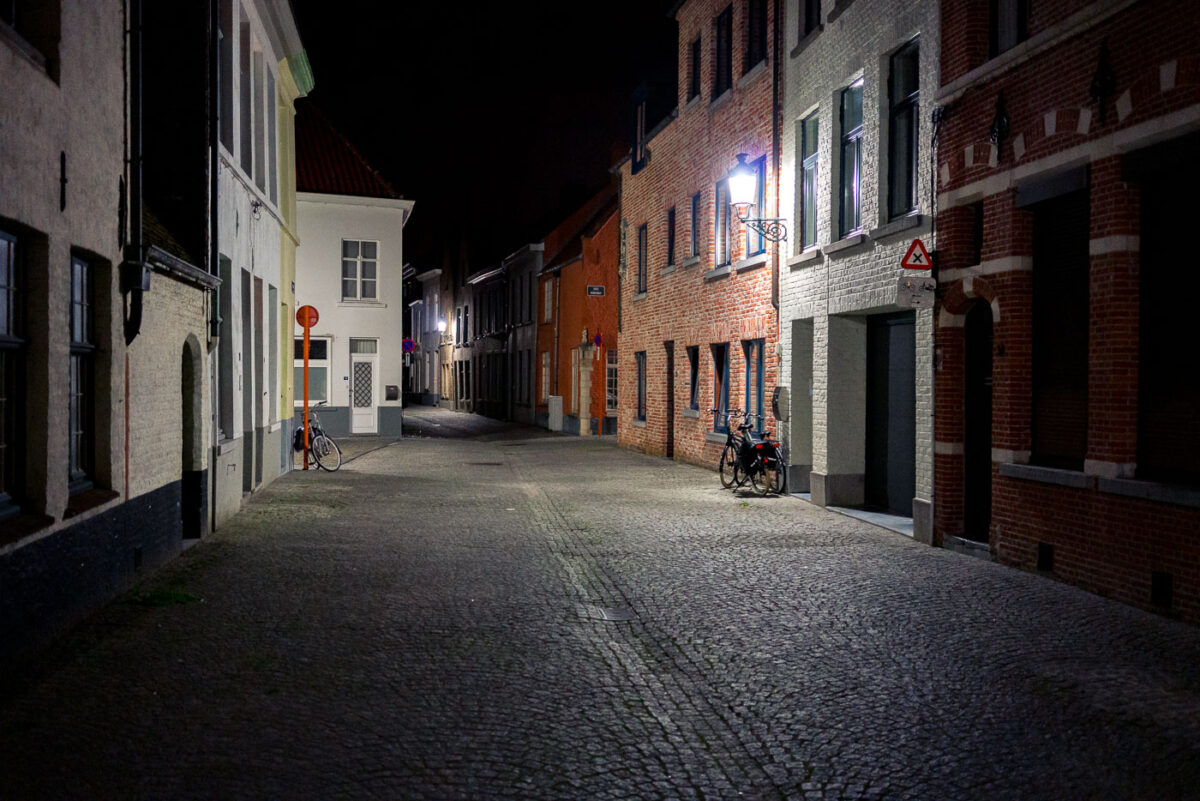
A quiet cobblestone lane in the historic center of Bruges, Belgium, stands nearly empty at night. Rows of brick and plaster townhouses line the narrow street, their windows dark, while a wall-mounted streetlamp casts light on a pair of parked bicycles. Standard European road signs are visible, including a red no‑entry sign at left and a triangular warning sign indicating cycle traffic on the right. Bruges’ medieval core, a UNESCO World Heritage site, retains many car‑restricted streets where bicycles are a common mode of transport for residents and visitors. The scene reflects the city’s emphasis on preserving historic architecture and prioritizing slow, local traffic in its dense urban fabric.
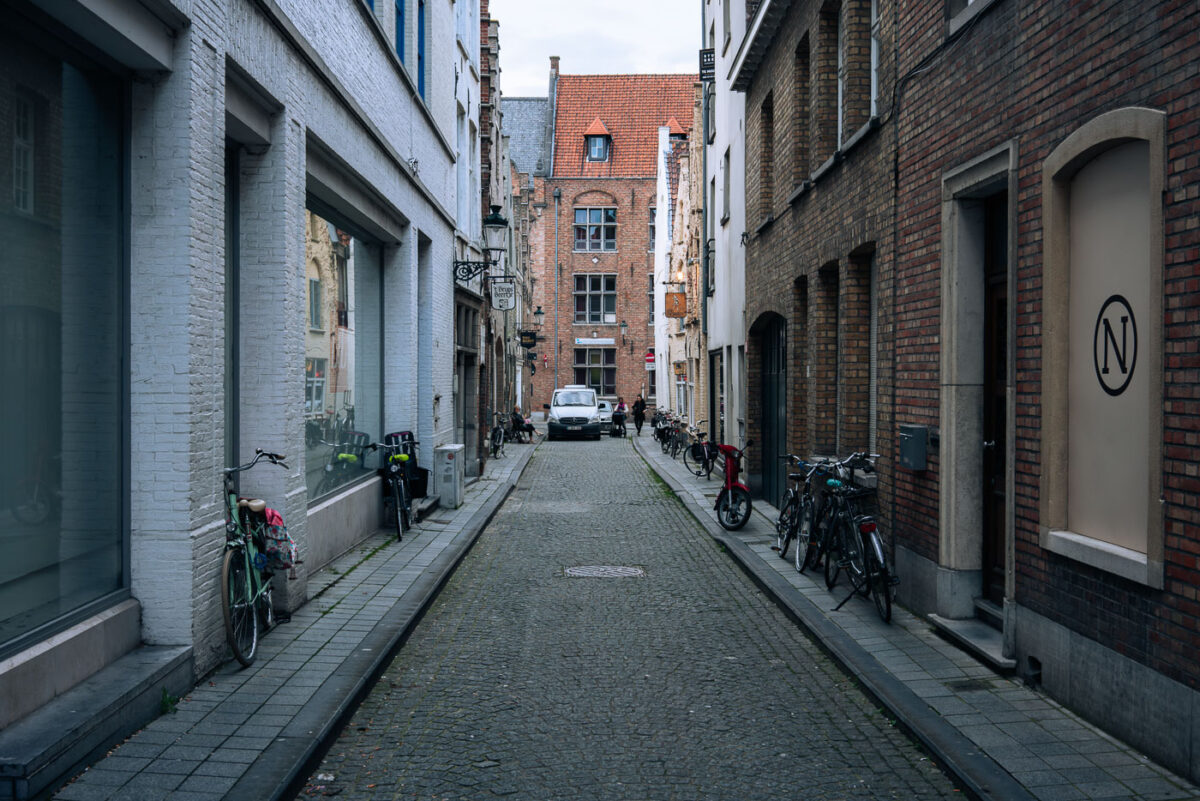
A alleyway in Bruges, Belgium. September 2017.
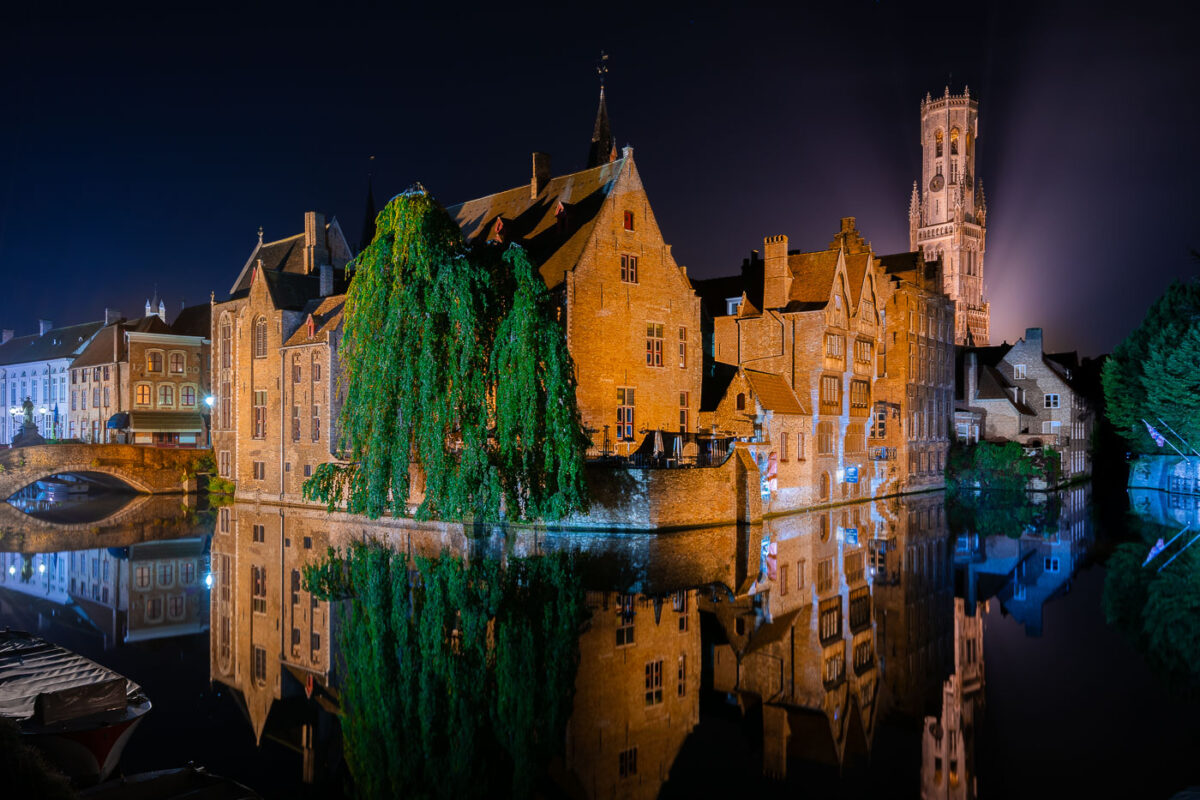
Bruges’ medieval waterfront is illuminated at night along the River Reie in the historic center of Bruges, Belgium. Brick gabled houses line the canal, their facades reflected in still water beside a stone arch bridge at left and moored boats in the foreground. A cascading willow tree drapes over the quay, while cafe terraces sit behind a low brick wall. In the background, the Belfry of Bruges rises above the rooftops, its 13th‑century tower lit from behind. The UNESCO‑listed old town’s canals, once part of a medieval trading network, are a focal point for visitors and local commerce throughout the year.

Nighttime reflections line a bend of the River Reie in Bruges, Belgium, as historic brick guild houses and stepped-gable facades mirror perfectly on the still canal. Two white tour boats sit moored for the night along the quay, while a vine-draped wall and a waterside restaurant pavilion are illuminated across the water. Church spires rise in silhouette behind the row of houses, anchoring the skyline of the medieval core. Bruges’ historic center, a UNESCO World Heritage Site, is known for its preserved canals and architecture that draw heavy daytime tourism; after hours, the waterways fall quiet except for lights from hotels and eateries along the quay.
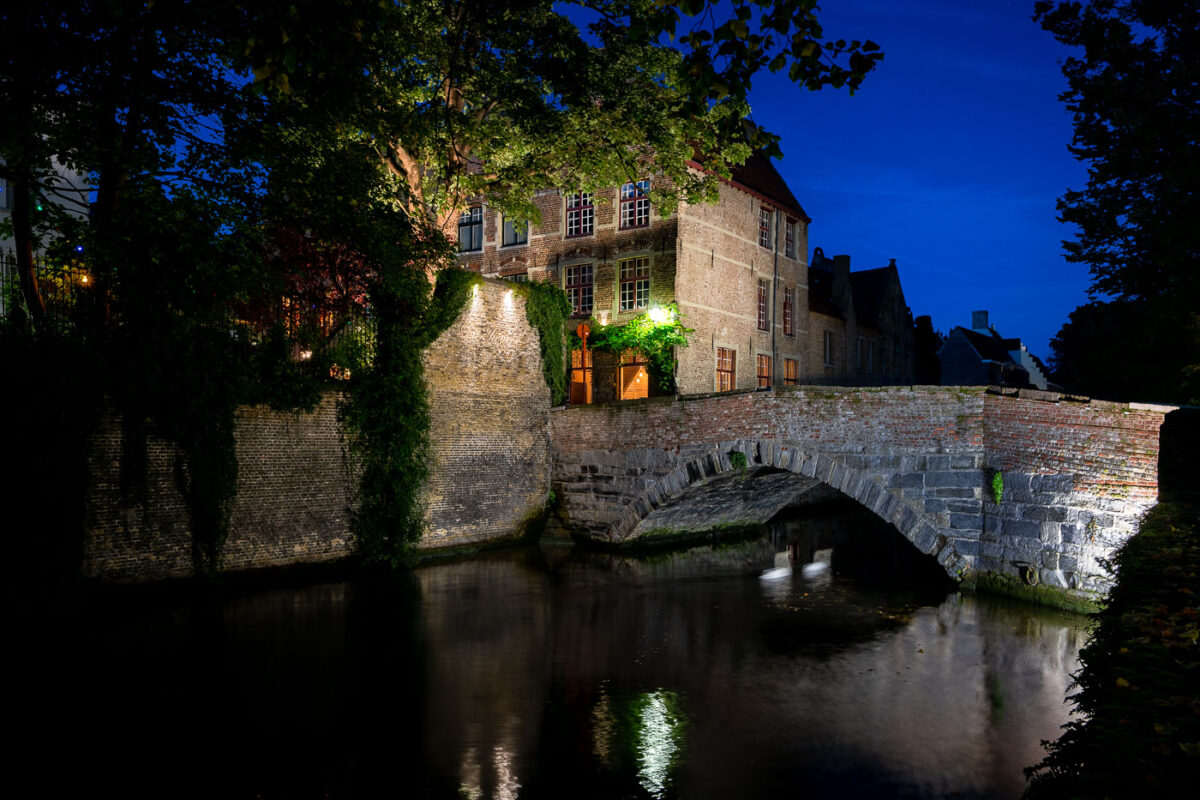
Medieval bridge on the Reie, Bruges at dusk. A single-arch stone and brick bridge spans a quiet bend of the River Reie in Bruges, Belgium, its parapet and adjoining quay lit by warm lamps that reflect on the canal. Behind the bridge, ivy climbs weathered brick facades and gabled townhouses typical of the city’s historic core, a UNESCO World Heritage site. Leafy trees frame the scene, and the waterway shows faint ripples but no pedestrians or boats are visible. The location sits along one of Bruges’ centuries-old canals that once supported trade and still anchor the city’s tourism and daily life. Keywords — Activities: evening strolls, sightseeing; Buildings: historic townhouses, canal quay; Location: Bruges, Belgium, River Reie, historic center; Objects: streetlights, ivy-covered walls, windows; People: none visible; Moods: tranquil, contemplative; Sceneries: canal, old bridge, reflections; Texts: none; Companies: none; Weather: clear evening; Plants: trees, ivy; Animals: none visible; Vehicles: none visible.
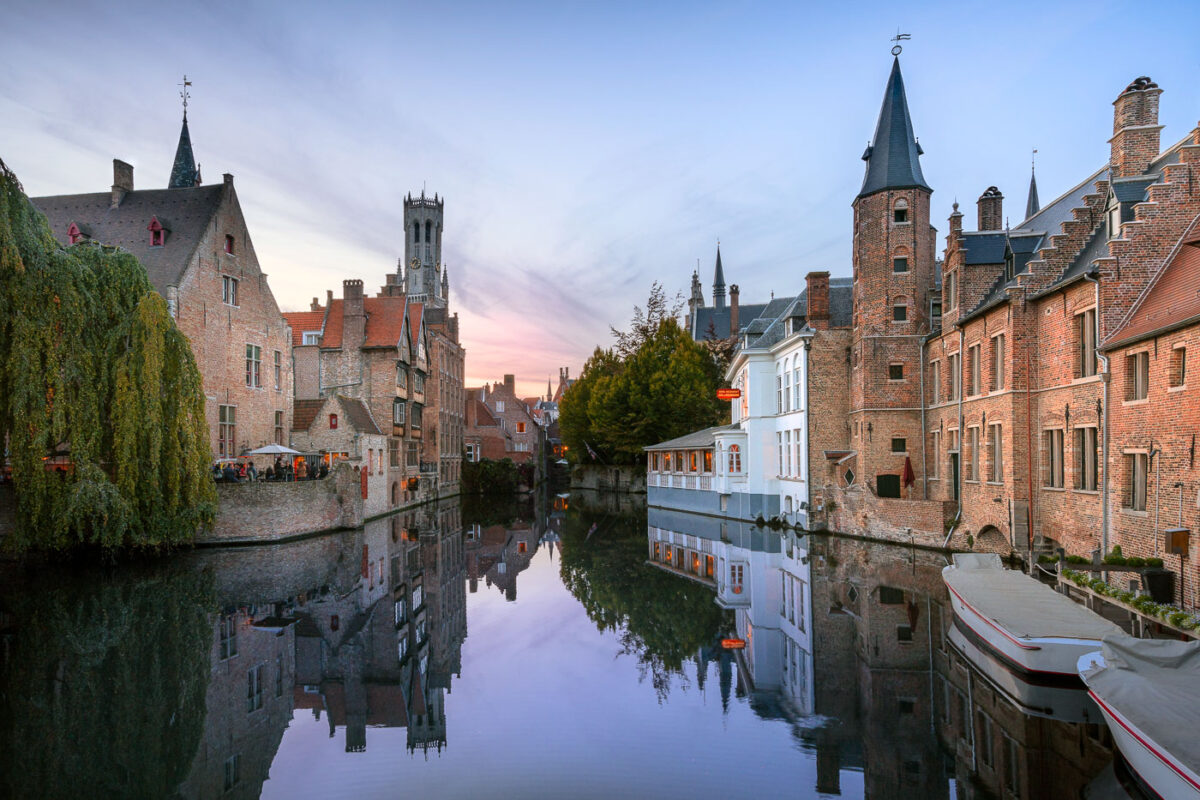
Rozenhoedkaai at dusk, Bruges, Belgium. Historic brick guildhouses and stepped gables line the River Reie, their facades and spires reflected in the still canal water. The Belfry of Bruges rises in the background, while a round turret and narrow townhouses frame the right bank. Covered canal tour boats are moored in the foreground, and a café terrace on the left hosts diners under umbrellas. This vantage, among the city’s most photographed, sits within the UNESCO-listed medieval core of Bruges in West Flanders, a reminder of the trading wealth that shaped the canal network.
Keywords — Activities: dining, sightseeing, canal tours; Buildings: medieval guildhouses, Belfry of Bruges, turreted townhouses; Location: Bruges, West Flanders, Belgium, Rozenhoedkaai, River Reie; Objects: umbrellas, café tables, red sign, mooring posts; People: diners, pedestrians; Moods: tranquil, reflective; Sceneries: canal, historic cityscape; Texts: signage on canal-side building; Companies: none visible; Weather: clear, calm evening; Plants: weeping willow, canal-side trees; Animals: none visible; Vehicles: tour boats.
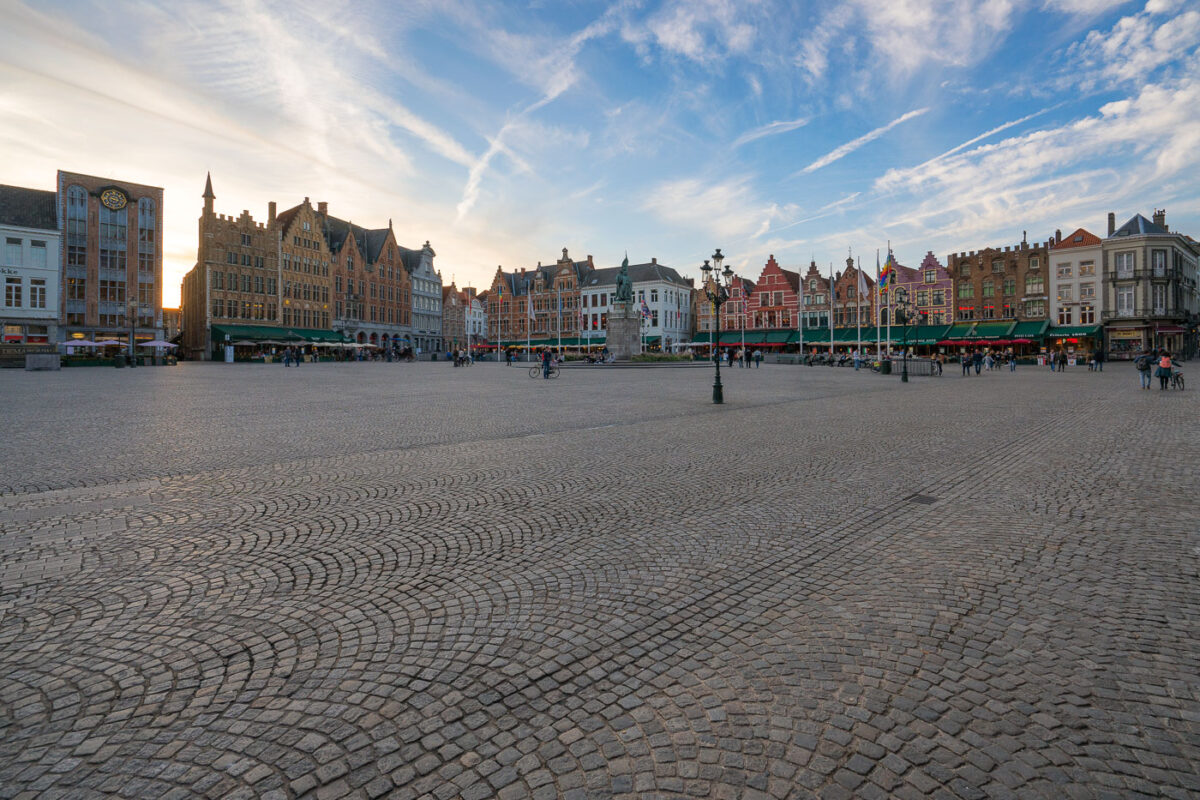
Evening on the Markt, Bruges, Belgium. Visitors cross the wide cobblestoned square as sunset light outlines the row of step‑gabled guild houses that front cafés with green awnings. At the center stands the 1887 monument to Jan Breydel and Pieter de Coninck, ringed by flagpoles and a cast‑iron lamppost. The scene captures a typical early evening in Bruges’ historic core, a UNESCO‑listed medieval city where the Markt has hosted trade and civic life for centuries. Contrails and thin clouds streak the sky while small groups linger near bicycles and restaurant terraces.
Keywords
- Activities: strolling, sightseeing, cycling, dining
- Buildings: step-gabled guild houses, cafés, monument plinths
- Location: Bruges, West Flanders, Belgium; Market Square (Markt)
- Objects: cobblestones, lamppost, flagpoles, café awnings, clock
- People: tourists, locals, pedestrians
- Moods: calm, unhurried, early evening
- Sceneries: historic town square, open plaza
- Texts: storefront signage, building numbers (unreadable at distance)
- Companies: local cafés and restaurants (unidentified)
- Weather: clear with high clouds at sunset
- Plants: none visible
- Animals: none visible
- Vehicles: bicycles
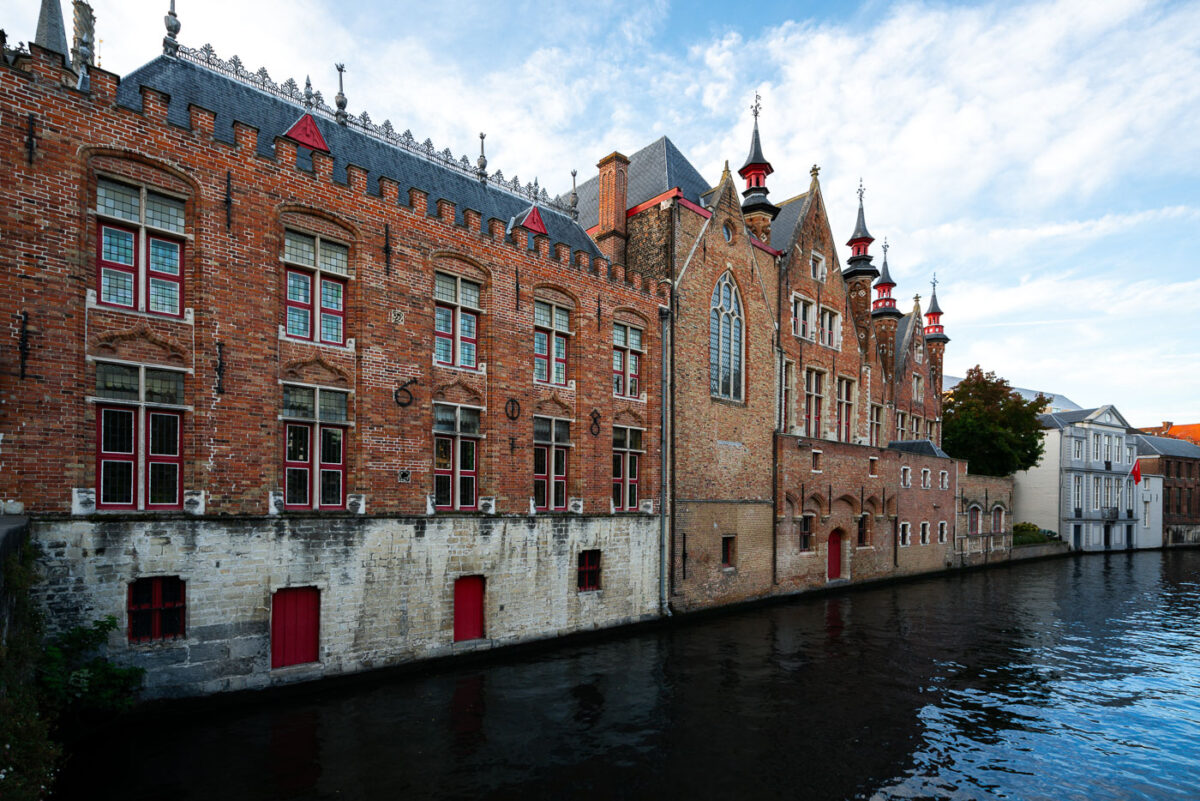
A row of red-brick Gothic buildings lines the River Reie in central Bruges, Belgium. The canal-facing facades feature crenellated rooflines, arched windows with red-painted frames, and small doors set into a pale stone base at water level. Iron wall anchors form decorative numerals on the brickwork, and slender spires and turrets rise above the gables on the right. Across the water, lighter-colored townhouses complete the scene, one flying a red-and-white flag. This view lies within Bruges’ UNESCO-listed historic center, where medieval canals once powered commerce and connected warehouses, hospitals, and guild structures. The Reie remains a defining feature of the city’s urban fabric and is a popular route for boat tours and heritage walks.

A quiet residential lane in Bruges, Belgium, stretches between rows of brick and plastered townhouses. Cobblestones pave the narrow street, which is lined with ground‑floor doors, shuttered windows, and a white arched garage entrance on the right. Several bicycles are parked against the façades, and a small traffic sign is visible toward the intersection in the distance. The scene sits within Bruges’ historic center, a UNESCO World Heritage site known for its well‑preserved medieval street grid and domestic architecture. Daytime clouds drift over the low‑rise buildings, and no pedestrians or vehicles are present.
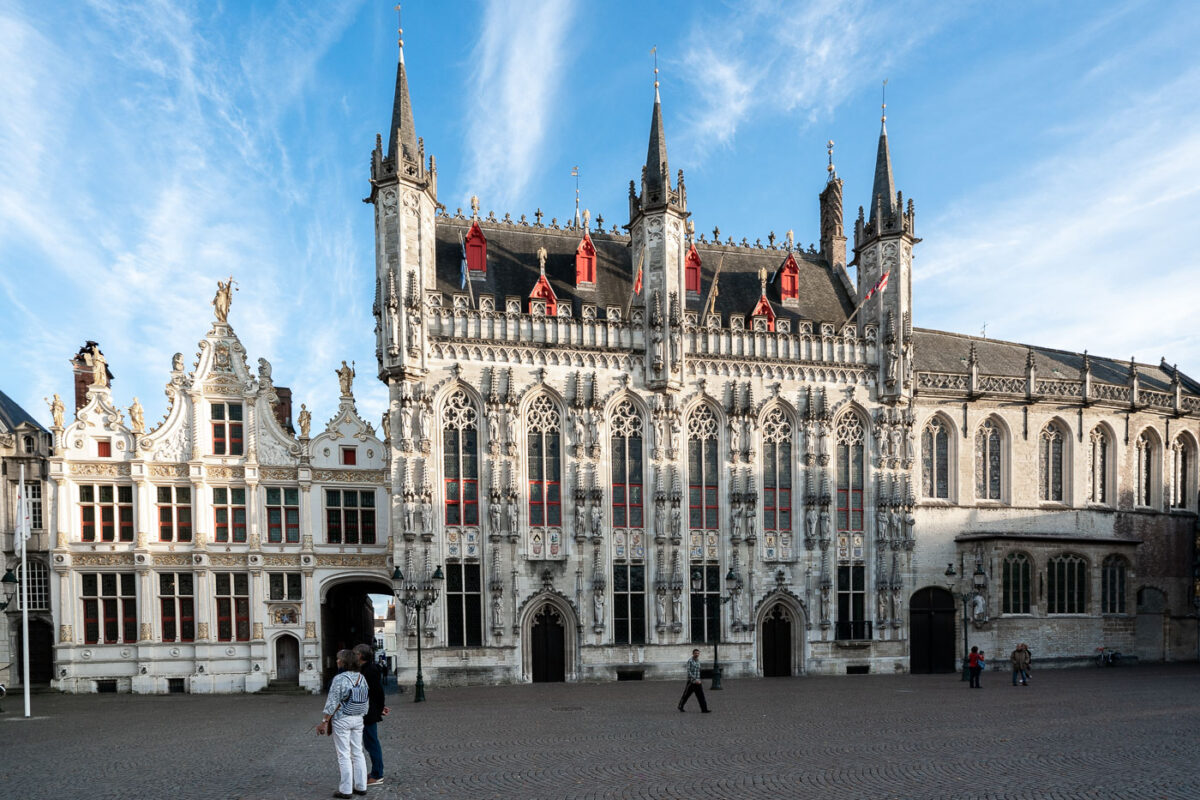
Bruges City Hall (Stadhuis van Brugge), completed in 1421, is one of the oldest and most ornate Gothic town halls in the Low Countries. Located on Burg Square in the heart of Bruges, Belgium, the structure features a richly detailed facade with vertical pinnacles, traceried windows, and over fifty sculpted figures representing biblical and historical figures important to the city’s heritage. The red dormer windows punctuating the steep slate roof are typical of Flemish civic architecture from the period. To the left, the adjoining Renaissance-style Oude Civiele Griffie (Old Civil Registry), built in 1537, complements the Gothic hall with gilded stonework and classical ornamentation. Together, the buildings form a symbolic center of Bruges’ civic identity and remain a key stop for visitors exploring this UNESCO World Heritage city.
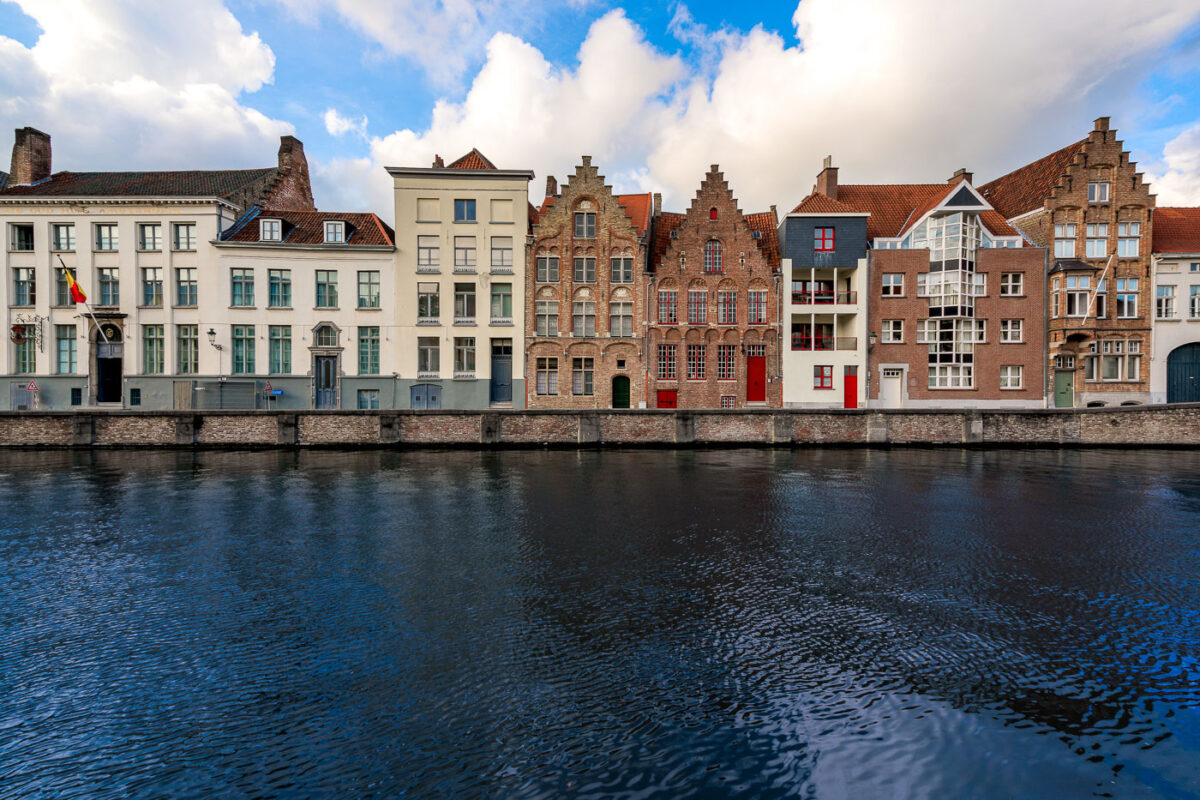
Stepped-gable townhouses line a canal of the River Reie in central Bruges, Belgium. A row of brick and plaster façades, some medieval in style and others with modern additions, faces the water across a stone quay. A Belgian tricolor flag hangs from a doorway at left, while red-painted doors and window frames punctuate several of the buildings. Bruges’ historic center, a UNESCO World Heritage Site since 2000, preserves the canal network that once linked this former medieval trading hub to the North Sea. No pedestrians or boats are visible on the quiet waterfront under partly cloudy skies. Keywords — Activities: sightseeing, canal-side walking; Buildings: stepped-gable townhouses, guildhouses, apartments; Location: Bruges, West Flanders, Belgium, River Reie; Objects: Belgian flag, windows, doors, balconies, stone quay; People: none visible; Moods: tranquil; Sceneries: urban waterfront; Texts: traffic signs; Companies: none; Weather: partly cloudy; Plants: none; Animals: none; Vehicles: none.

River Reie canal through Bruges’ historic center. Rows of brick and whitewashed townhouses with stepped gables line both banks of the River Reie in Bruges, Belgium. A Belgian tricolor flag hangs from one façade, and wrought-iron street lamps and balconies frame tall windows along the quay. Several pedestrians walk the right-hand embankment as calm water reflects the buildings and a low arched bridge visible in the distance. The scene is photographed in daylight under a partly cloudy sky within the UNESCO-listed medieval core known for its preserved canal network. Keywords — Activities: walking, sightseeing; Buildings: gabled townhouses, historic façades; Location: Bruges, Belgium, River Reie, historic center; Objects: Belgian flag, street lamps, balconies, canal walls; People: pedestrians, tourists; Moods: calm, reflective; Sceneries: canal, waterfront, bridge; Texts: none visible; Companies: none; Weather: partly cloudy, fair; Plants: sparse greenery on quay; Animals: none; Vehicles: none.
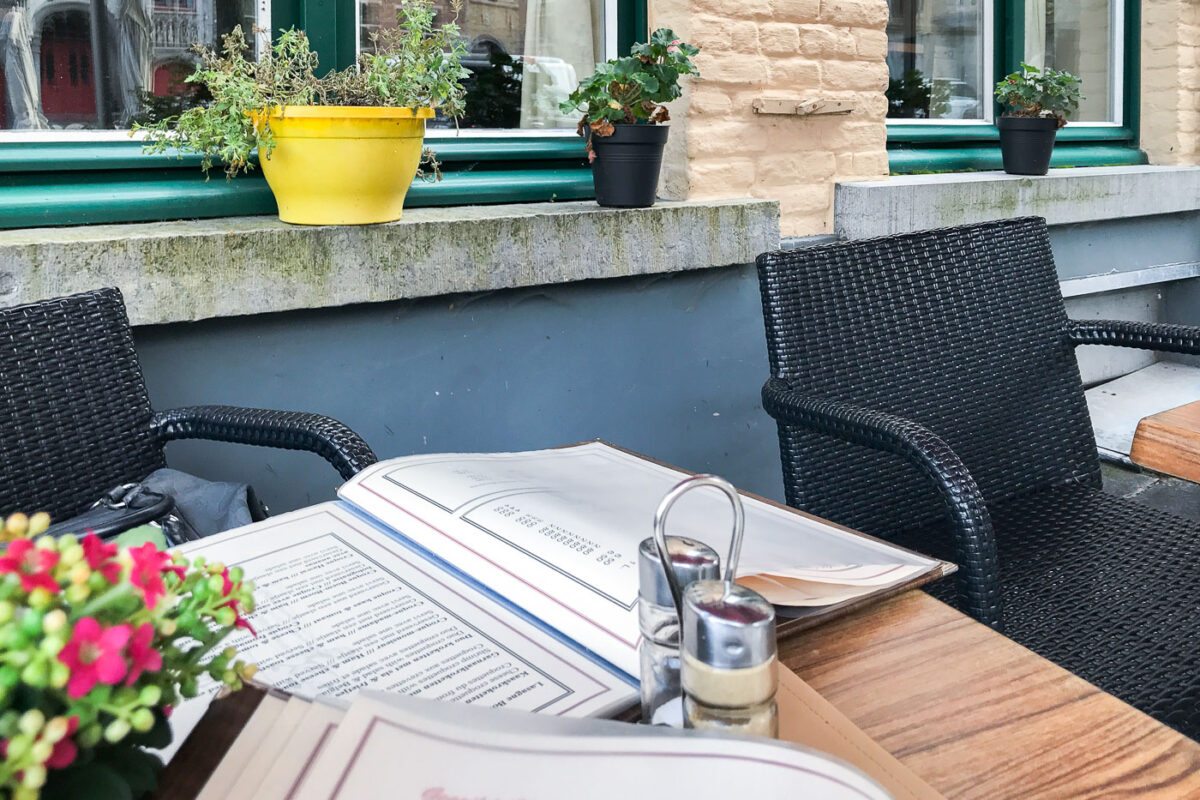
A small café table set along a cobblestone street in Bruges, Belgium, with a menu laid open beside salt and pepper shakers and woven black chairs. The table sits beneath pastel-colored brick façades and flower pots on stone ledges—typical of the city’s historic core where cafés blend seamlessly into centuries-old townhouses. Outdoor seating like this is common throughout Bruges’ quieter lanes, offering a relaxed view of daily life amid the preserved medieval architecture.
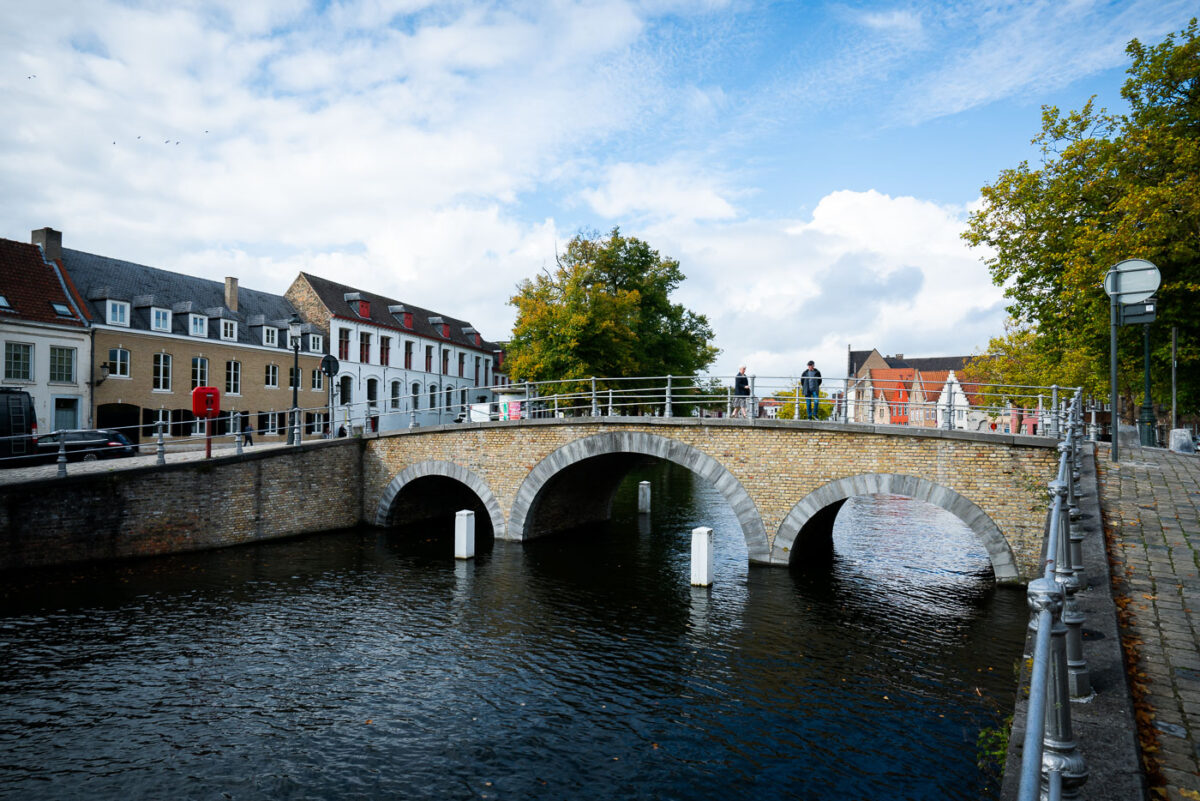
Pedestrians cross a three-arched brick bridge over a branch of the River Reie in Bruges, Belgium. Historic row houses with red-tiled roofs and a mix of gabled and flat façades line the canal, while bollards and railings mark the waterway and walkway. Trees showing early autumn color frame the scene, and a partly cloudy sky brightens the medieval streetscape. The canal network, once the commercial lifeline of the city, is part of the UNESCO-listed Historic Centre of Brugge and remains a focal point for daily life and tourism.
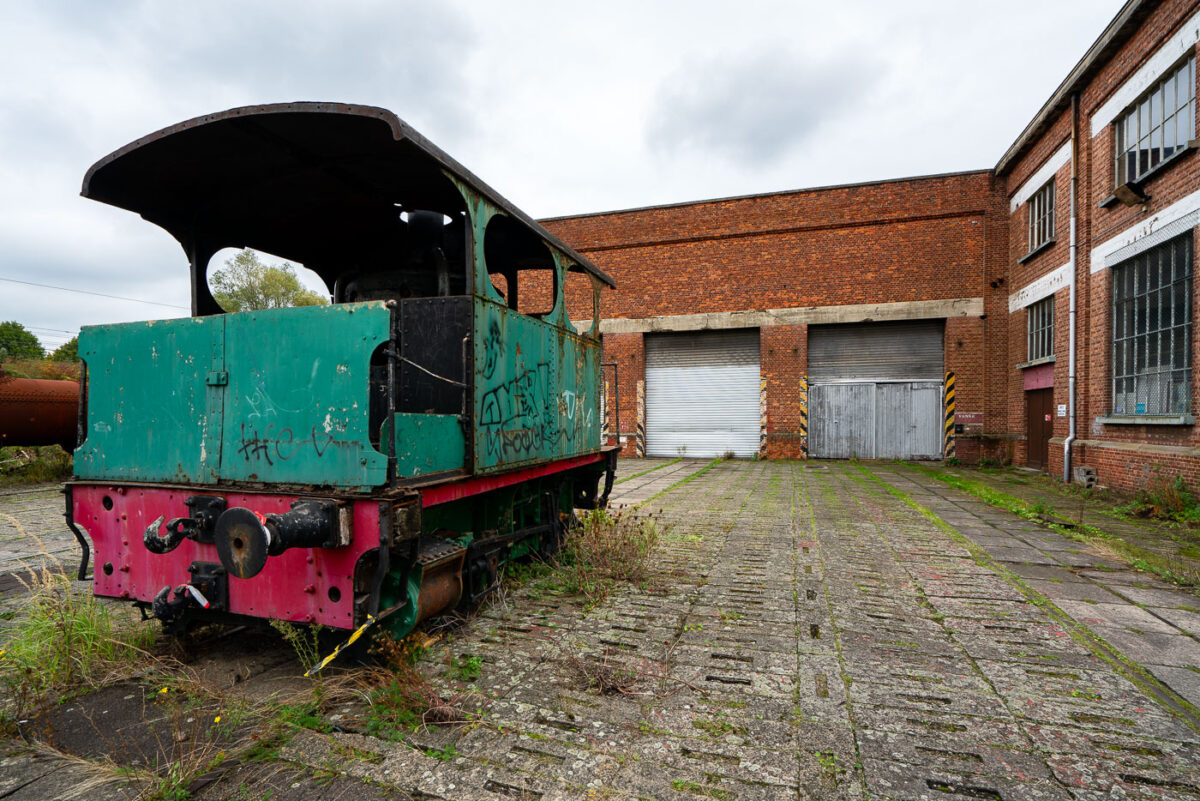
Abandoned trains in Belgium.

A decommissioned SNCB/NMBS Autorail Série 400, unit no. 4001, rests abandoned on a disused siding near Charleroi, Belgium. Built in the early 1950s by BN (La Brugeoise et Nivelles), these diesel multiple units were among Belgium’s first post-war efforts to modernize regional and intercity rail travel, replacing steam on secondary lines. The streamlined design and two-tone red-and-cream livery reflected the optimism of that era’s industrial renewal. Decades later, this car’s faded paint, shattered windows, and rust-etched steel now mark the slow decay of a machine that once represented progress in Belgian transport history. The surrounding derelict depot underscores the decline of Wallonia’s railway manufacturing heritage.
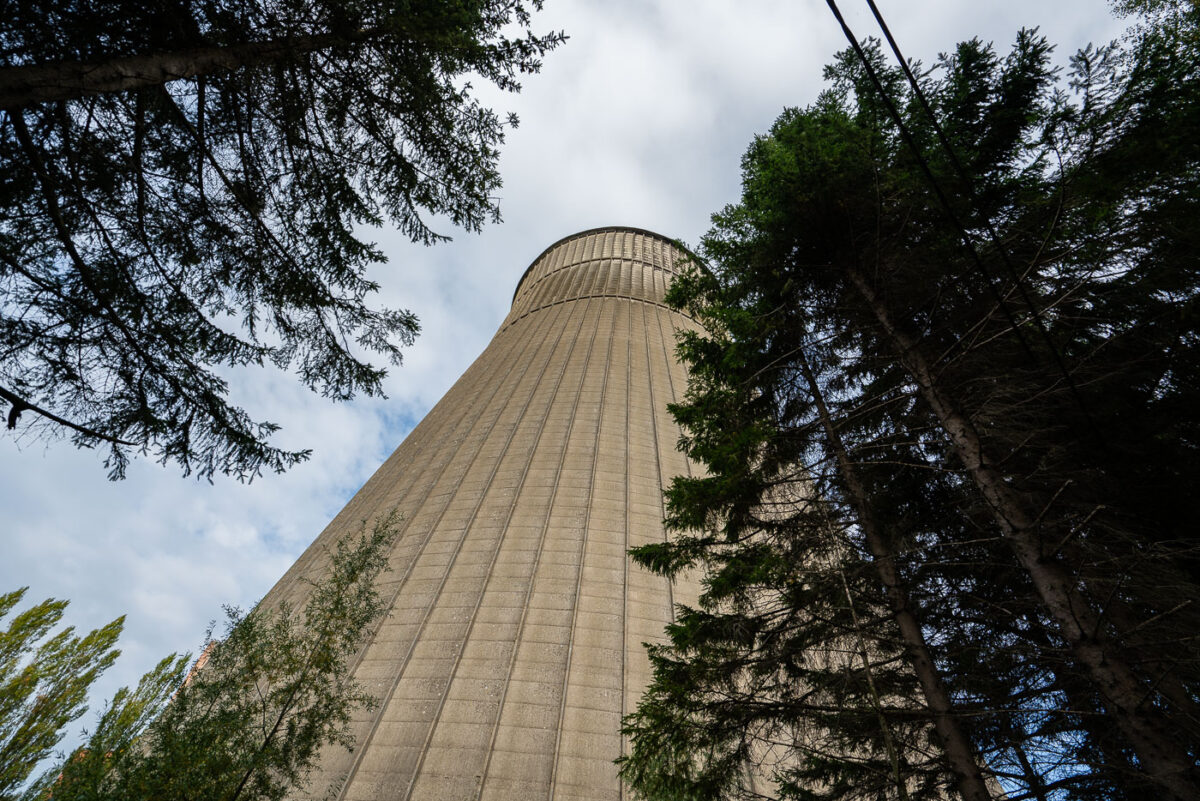
A 118-meter-tall cooling tower stands amid overgrown trees at the former Monceau-sur-Sambre power station near Charleroi, Belgium. Constructed in the 1960s as part of a large coal-fired generating complex operated by Electrabel, the hyperboloid structure was engineered from reinforced concrete with vertical ribbing to support its weight and withstand wind pressure. The tower once cooled thousands of cubic meters of water per hour, discharging excess heat from the station’s turbines that supplied electricity to the industrial Walloon region. Following the plant’s closure in the early 2000s, the site has remained disused, its monumental scale and weathered surface now emblematic of Charleroi’s industrial decline and gradual environmental recovery.
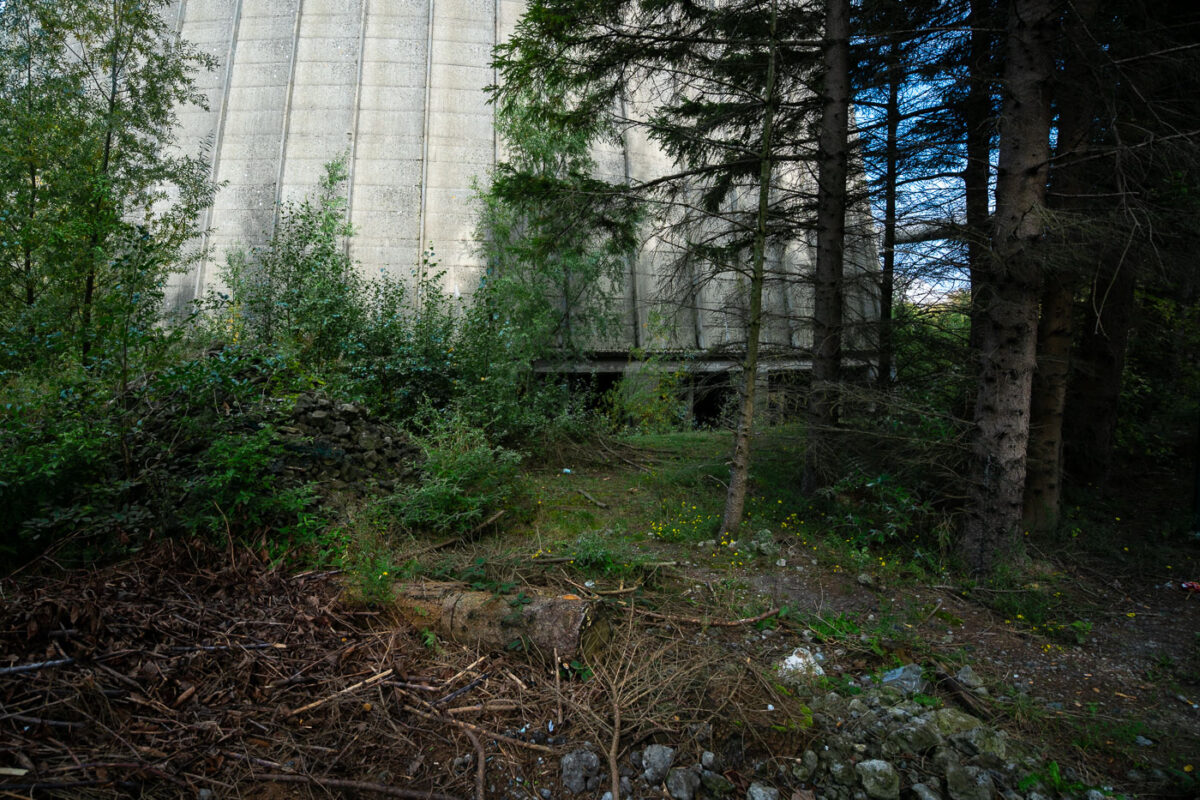
Dense vegetation surrounds the concrete base of a decommissioned cooling tower in Charleroi, Belgium. The structure’s massive form rises from a patch of overgrowth and debris, where nature has begun reclaiming the once-industrial site. The cooling tower, part of an abandoned power plant complex, remains a reminder of the region’s post-industrial landscape and transition away from coal-era energy infrastructure.
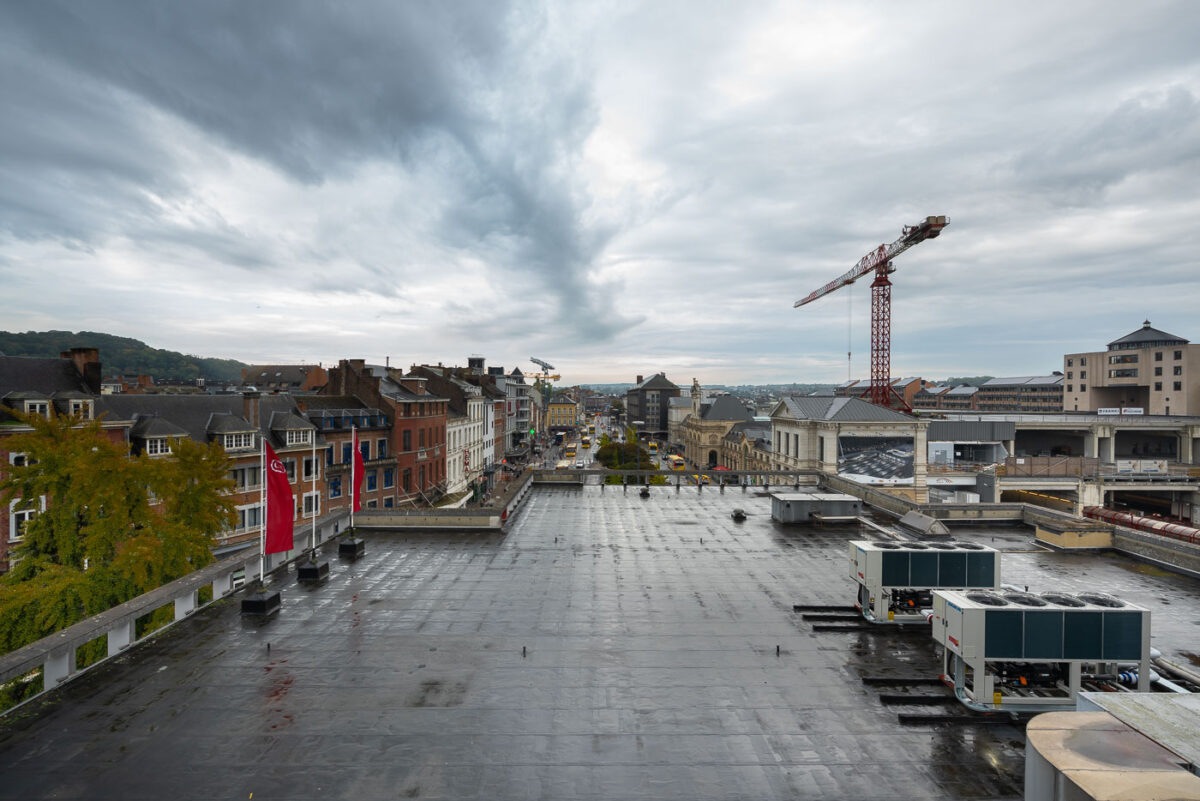
Looking along Rue de Fer toward Namur’s main station in Wallonia, Belgium. Historic brick and limestone façades line the street, with the HEMA storefront sign visible among local shops and cafés. Buses and pedestrians move through the late afternoon traffic on a damp autumn day, reflecting the city’s mix of preserved 19th-century architecture and contemporary commercial life near the railway hub.